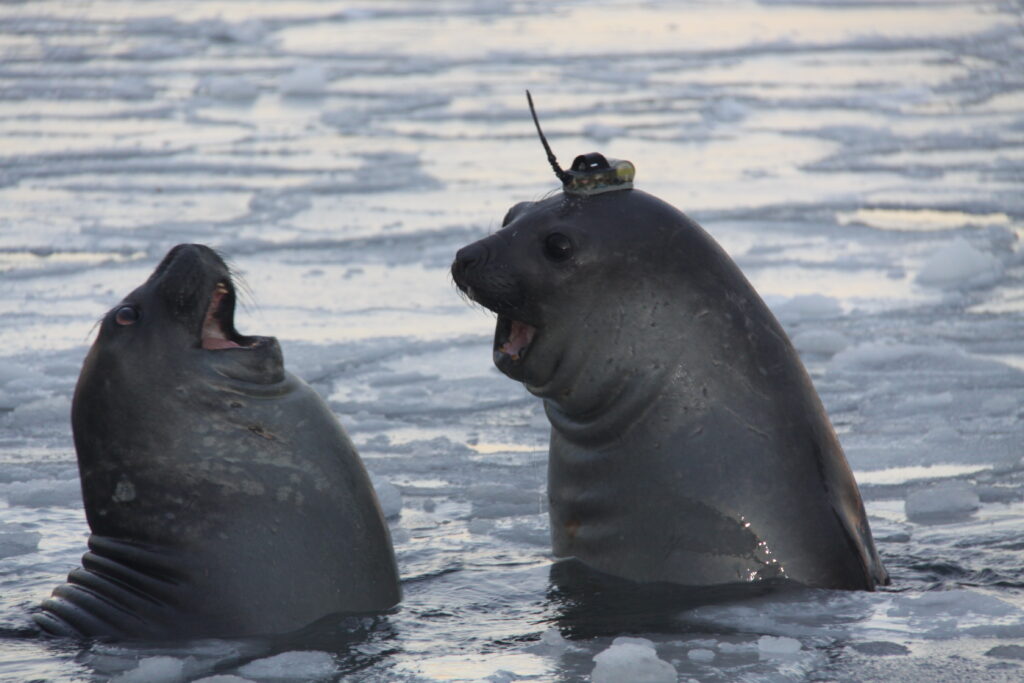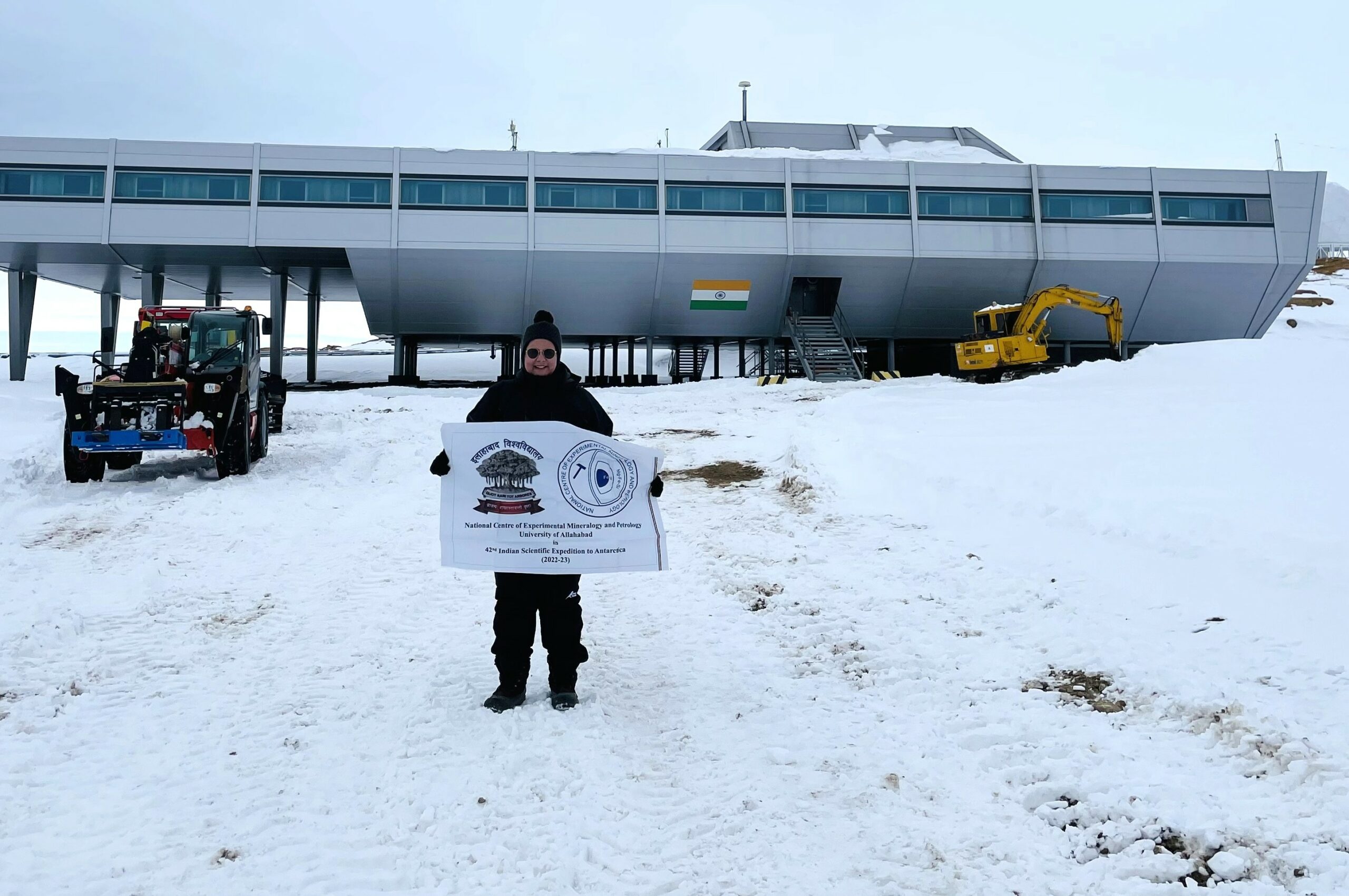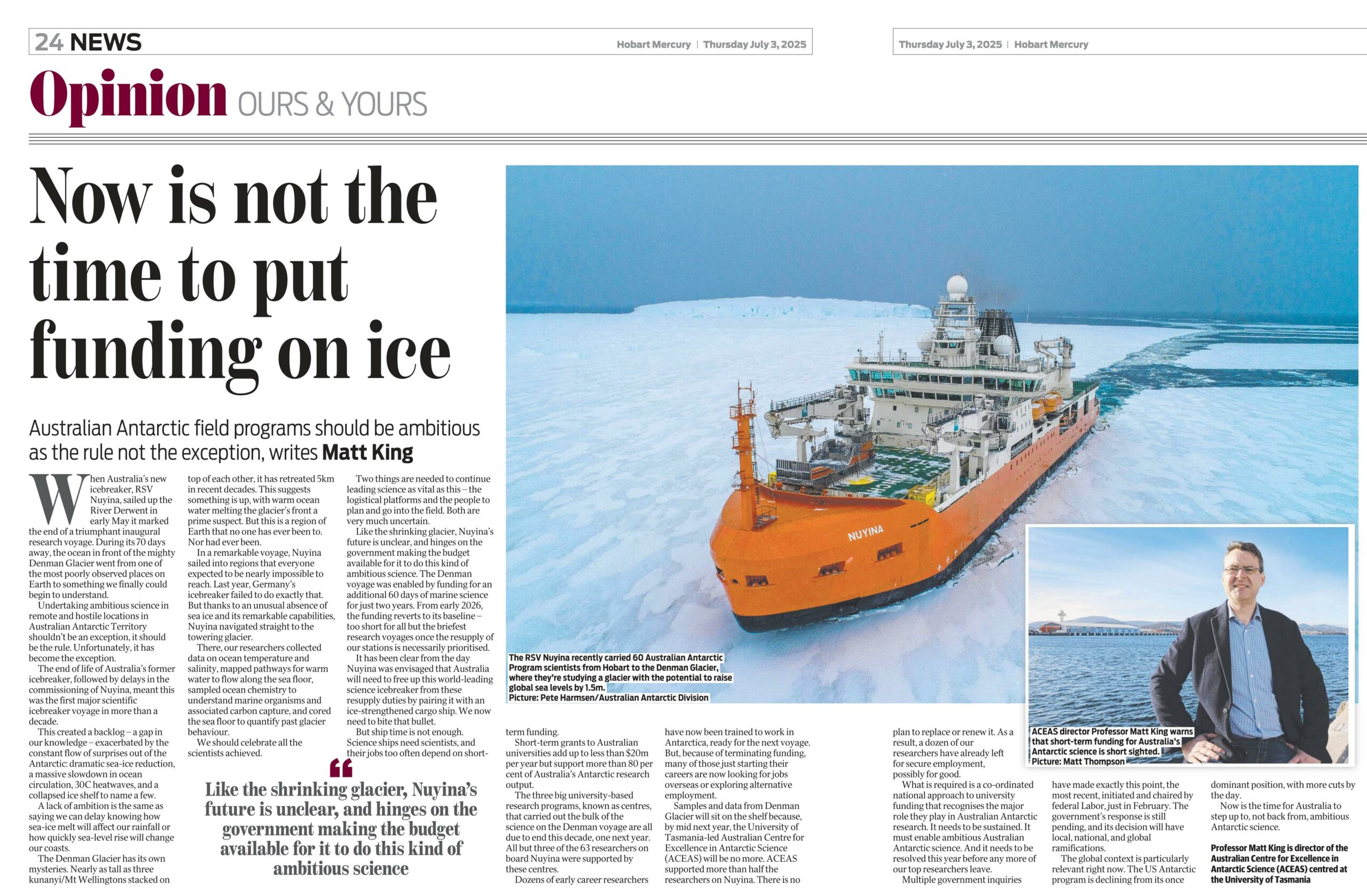Seals to gather intel on the Southern Ocean

Elephant seals are the ultimate divers—travelling long distances, and diving to 1500m depths. They are crucial to gathering knowledge on the Southern Ocean’s role in the global climate system. Photo: Clive McMahon, IMOS and SIMS.
The first ARC Australian Centre for Excellence in Antarctic Science (ACEAS) project drawing upon the capabilities and support of the RSV Nuyina is now underway.
The ACEAS elephant seal tagging team are aboard the icebreaker that departed this week for Macquarie Island. Once the team arrive, they will spend the next few weeks in relative isolation at Bauer Bay, gathering data on the world’s most mysterious ocean—the Southern Ocean—via elephant seals.
Each day, up to five seals will be fitted with small satellite-linked devices that measure temperature, salinity and depth as the animals travel underwater. The data is then fed back to the team in real-time.
Dr Clive McMahon is based at the Sydney Institute of Marine Science and leads the Integrated Marine Observing System (IMOS) Animal Tracking Facility. He also leads this ACEAS project—a team of four, which includes a vet.
Dr McMahon has spent more than 30 years working with elephant seals. They are the ultimate divers—travelling long distances, and diving to 1500m depths. He says these animals are crucial to gathering knowledge on the Southern Ocean’s role in the global climate system. The seals tagged in this project will capture oceanographic data as they travel between Casey Station and the Ross Sea in East Antarctica.
“This part of the ocean has not been monitored for 10 to 15 years,” he said.
“We’re gathering sound, high integrity information to help better understand climate change—the great pressing challenge of our time.”
The team are experienced in capturing, handling and anaesthetising elephant seals. Dr McMahon says elephant seal tagging programs are proactive in recognising that “when working with animals we can have an effect. We’ve published a comprehensive body of work on this in the past 20 years.”
He says in the short term, how the animals grow when carrying vs not carrying instruments is equal. Which means the instruments don’t impede their ability to feed and find food.
The size and number of pups born is also the same. This means the seals are still able to source enough food for themselves and their babies.
“Overall, survival and reproduction aren’t affected by carrying these instruments,” Dr McMahon said.
“The smaller seals, the ones we’re tagging, weigh between 300–600 kgs. The instruments weigh 550 grams.”
The scientists will land on the island via a helicopter deployed from aboard the RSV Nuyina. They arrive during the ‘mid-year haul out’—a time when the seals sleep onshore individually, with about 20–30 seals to a beach, ie. not in large breeding harems.
ACEAS is contributing 10 tags to the IMOS Animal Tracking Facility. The aim of the project is not only to capture ocean data, but behavioural information on the elephant seals too.
“Sometimes, these trips bring up a lot more questions,” Dr McMahon said. “By no means do we know everything about these animals. About how they use their environment, how those environments affect their behaviour, growth, offspring, and the health of their population.”
“We’ve been studying humans longer than we have seals—and still don’t know everything there!”
The ACEAS elephant seal tagging team:
- Dr Clive McMahon, Sydney Institute of Marine Science, IMOS
- Dr David Green, ACEAS post-doc
- Professor Rob Harcourt, Marine Predator Research Group at Macquarie University
- Dr Esther Tarszisz, wildlife veterinarian.
For more information on the Animal Borne Ocean Sensors (AniBOS) network, which works within the Global Ocean Observing System (GOOS): https://www.frontiersin.org/articles/10.3389/fmars.2021.751840/full


